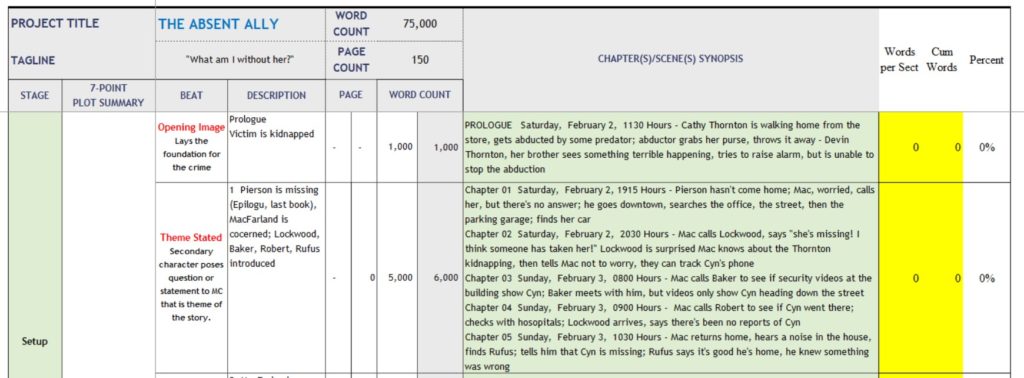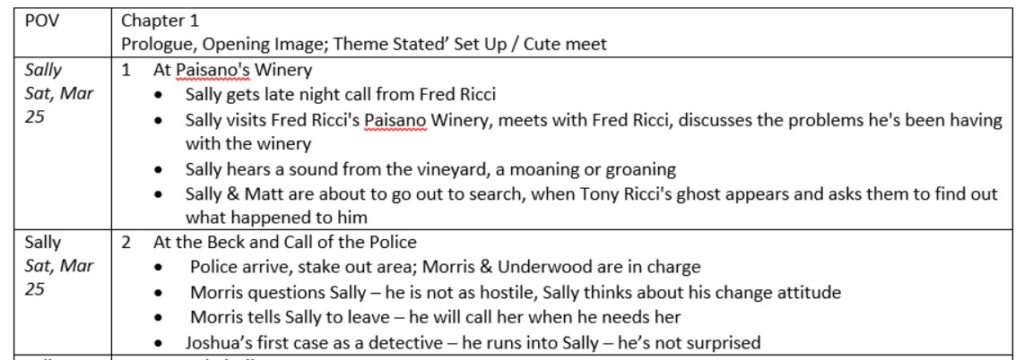When I was younger, I had dreams of being a fantastic author. I had always been a smart kid, often regarded as above average in academic subjects. So why shouldn’t I think that I would be successful as an author? I did have all the requisites: a good imagination, a command of English, an ability to spin a yarn (although my family often interpreted this in a slightly different way: “Can’t you ever tell the truth? Why is everything with you a twisted version of what you saw on Mulberry Street?”).
However, growing up has shown me that requisites are not sufficient. Writing a novel, least of all writing a series of novels, requires perseverance, dedication, and a love of your creation that borders on narcissism. It took me many aborted attempts to write a novel or start a series before I was able to achieve anything that actually resembled my dream.
My problem was that when I started writing, I was a pantser – I wrote my novels by the seat of my pants, allowing my creativity to bring the novel from concept to completion. There was one flaw to this approach.
I didn’t finish many of my stories. I still have over two dozen stories sitting on my shelf in various stages of incompletion because I adopted this strategy of writing.
When I started writing The Hot Dog Detective series, all I had was an abstract character I had once seen selling hot dogs at the corner of the Courthouse, a bunch of titles, and a vague idea of what I wanted to create. I was fortunate enough to discover the Save the Cat approach to story structure. I developed a standard structure for that series that worked out fairly well. Each book would be seventy scenes, divided into fourteen plot points, plus a prologue and an epilogue. Each scene would average one thousand words, giving me a novel of 70,000 to 75,000 words. This structure provided me a roadmap to my stories that not only would satisfy readers, but would make it easy for me to manage my writing productivity. (See Fig. 1)

Fig. 1 – Sample Blake-Snyder Plot Outline for Hot Dog Detective Novel
I had become a plotter – I wrote my novels by plotting them out, scene by scene, with careful attention to character, plot point, and structural detail. And the result was that I finished writing twenty-seven novels.
When I decided to write a second series of cozy mysteries, I knew I was going to do so as a plotter, but I didn’t want the new series to be a carbon copy of the first series. I decided that I needed to adopt a different structure. First, my new series of stories, while focusing on one main character who solves the mysteries, would also include a romantic side story, told from the two views of the romantic couple. Each book would be ten chapters long, and each chapter would have seven scenes: five from the point of view of my main character, two from the point of view of my romantic couple. This structure also gave me a novel of approximately 70,000 words. (See Fig. 2)

Fig. 2 – Sample Blake-Snyder Plot Outline for Crystal Cove Novel
I had to adapt the Save the Cat structure to this new format, as well as incorporate the beat points commonly found in most romance novels. The resulting structure, while more challenging to write, has yielded a story that I think is interesting to my readers. At least I hope so.
I realize that not every novelist is a plotter. Nor should you be if the demands of plotting prove too onerous or restrictive to you. But for me, the ability to actually get a novel written proves that plotting is the right strategy for me.
I still have one question remaining. What will I do if I decide to write a third series? Create another structure?